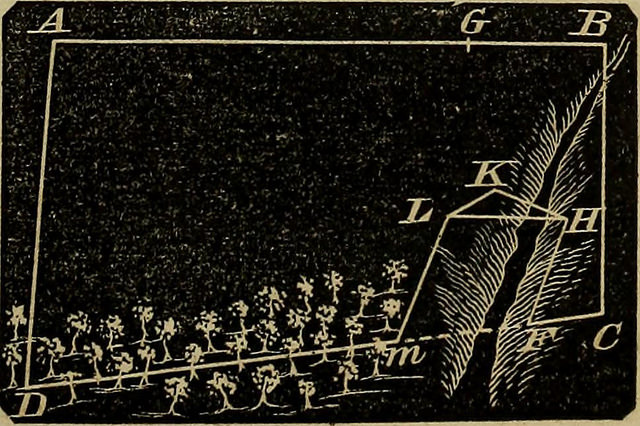The techniques used in traditional election studies are not suitable for understanding modern electoral realities
Since their advent in the mid 20th Century, election studies were based upon understanding voters ideological preferences. Paul Whitely argues that we need a fundamentally different approach to studying the dynamics affecting party choice to increase our understanding of voting behaviour and election outcomes in the twenty-first century.

Credit: Internet Archive Book Images
How should we study electoral choice in the twenty-first century? The answer to this question is that our methods need to reflect both theoretical developments and methodological innovations in the study of voting behaviour which have occurred in recent years. The first national election study conducted in the United States in 1948 consisted of a national probability survey with interviews carried out in people’s homes. It obtained a response rate of 84 per cent and was very successful in testing the prevailing sociological theories of electoral choice at the time.
These theories stressed the importance of individual Americans identifying with the Democrats or Republicans, arguing in effect that ‘brand loyalty’ was the key to understanding voting behaviour. Such loyalty or ‘party identification’ was thought to be socialised into adolescents within the family and in the community and once acquired this would remain largely unchanged or even get stronger as individuals grew older. A survey which took several months to complete was an ideal vehicle for testing these ideas which very much emphasised stability rather than change.
David Butler and Donald Stokes imported both the ideas and the methods from the American National Election study when they did their first survey in Britain in 1963. Their core argument was summarized with rhetorical flourish by the political sociologist Peter Pulzer in his often-quoted phrase: ‘in British party politics, class is everything, all else is embellishment and detail’. In this view the class environment in which people were socialised created and subsequently reinforced their partisan attachments which, in turn, did much to explain how they voted. Although there were always some exceptions, the majority of working-class people identified with and voted Labour, whereas most middle- and upper-class people identified with and voted Conservative. Minor parties such as the Liberals were not accommodated in this theoretical scheme because, circa the mid-20th century, they had a small and apparently declining vote share.
This model of electoral choice meant that partisanship was ‘exogenous’ to electoral choice, which means that it influenced the vote but was not itself significantly influence by the vote. This one-way process is important for purposes of analysis, since if there is no feedback in the relationship between partisanship and voting it is relatively straightforward to estimate the magnitude of the link. The main rival theory – the spatial model of party competition introduced by Anthony Downs and Duncan Black – also assumed a one-way link, in this case between issues and voting. That model argues that the basis of electoral choice is voter agreement or disagreement with the policy positions taken by the political parties. Left-wing inclined voters will support a party of the left, whereas right-wing inclined voters will not. This model simply assumes that voter’s ideological preferences are exogenous – an assumption inherited from economic theory. Recent research suggests that it is actually a poor representation of reality.
More recent work has suggested that electoral choice is driven mainly by valence or performance issues. To put it simply, people will vote for a party which they think will deliver on the relatively few issues they care about, and over which there is widespread agreement about what should be done. For example, the great majority of voters prefer a buoyant economy to an economy in recession and so they will support a party which they think is most likely to deliver this. The key to modern electoral politics is to recognize that individuals focus much more on the question ‘Who can do the best job in delivering what we want?’, rather than the question: ‘Which party is best at delivering the policies I agree with?’ or the statement: ‘If I am working class then I should vote Labour’. The model raises important general issues for the social sciences about relationships between theory, model specification and empirical analyses and, in particular, the value of major survey datasets gathered in traditional national election studies.
In the valence politics model voting is the product of dynamic, oftentimes fast-moving decision-making processes. People attempt to make sensible decisions in complex situations where stakes are high, uncertainty abounds, and personal influence on outcomes is vanishingly small. They will rely on simple, but powerful, heuristics or information processing short-cuts to guide their choices, such as ‘Do I like this party leader?’ and ‘Has my financial situation improved under this government?’ As a result electoral choice is the result of multiple inter-relationships among key variables which make up the model. There is no exogenous anchor to voter decision-making so that evaluations of the economy judgements about party leaders, partisan leanings and vote intentions all ‘bounce off’ each other in an ongoing inter-temporal tennis match. This contest is viewed imperfectly through the lens provided by traditional election study data sets.
Partisanship is still an important part of the valence model but it works differently from the traditional interpretation. The problem for the traditional analysis is that it is seriously inconsistent with survey evidence obtained from interviewing the same people on more than one occasion over time. This shows that far from being stable and unmoving, partisanship bounces around a lot with individuals switching backward and forward between different parties and between partisanship and non-partisanship. Roughly speaking about 30 per cent of survey respondents will switch their loyalties in the lifetime of a Parliament. The modern interpretation of partisanship is that it is a running tally of voter evaluations of the performance of the parties in the past. If a party does badly it will lose its positive brand image and many people will cease to identify with it. On the other hand a successful performance will have the opposite effect.
The methodological implications of this are clear. Traditional election studies which take months to collect are quite unable to examine dynamic decision-making of this type. They face other problems as well, including high costs, falling response rates, an inability to conduct survey based experiments, and a lack of coverage during the inter-election period when most elections are actually won or lost. The alternative to the traditional survey design is to migrate to the internet or to use telephone surveys. The latter are actually not very attractive because they are relatively high cost compared with the internet, and they suffer from very low response rates. Some agencies have to call ten people at random to get one of them to do the survey since telemarketing, mobile phone usage and other problems make it very difficult to get adequate samples by phone. The internet is not perfect but it is the best option available for studying the dynamics of electoral choice.
The nature of voter decision making has implications for the analysis of electoral data as well. If variables interact with each other then we cannot use the traditional methods which assume that relationships are one-way only. All of these considerations mean that traditional election study designs which are now seventy years old are stuck in the age of the Model T Ford, when we really need methodologies suitable for the age of the driverless car.
—
Note: This piece represents the views of the author and not those of Democratic Audit or the LSE. For a longer discussion of this subject please see this piece by the author and Harold D. Clarke, David Sanders, and Marianne C. Stewart. Please read our comments policy before posting.
—
Paul Whitely is Professor of Government at the University of Essex






 Democratic Audit's core funding is provided by the Joseph Rowntree Charitable Trust. Additional funding is provided by the London School of Economics.
Democratic Audit's core funding is provided by the Joseph Rowntree Charitable Trust. Additional funding is provided by the London School of Economics.
RT @democraticaudit: The techniques used in traditional election studies are not suitable for understanding modern electoral realities http…
Techniques used in traditional election studies aren’t suitable for modern electoral realities https://t.co/AC8Kt9krXx https://t.co/0TwrDfEo0F
Paul Whitely: Internet is not perfect but it is best option available for studying dynamics of electoral choice https://t.co/c3j95qhyNl
A new look at election analysis https://t.co/8pmZ2yluOu
Voters go for party they think will deliver on the few issues they care about, where it’s ‘agreed’ what shd be done https://t.co/c3j95qhyNl
The techniques used in traditional election studies are not suitable for understanding modern electoral realities https://t.co/UccGDm6fYo
The techniques used in traditional election studies are not suitable for understanding modern electoral realities https://t.co/yopjQRmZRQ